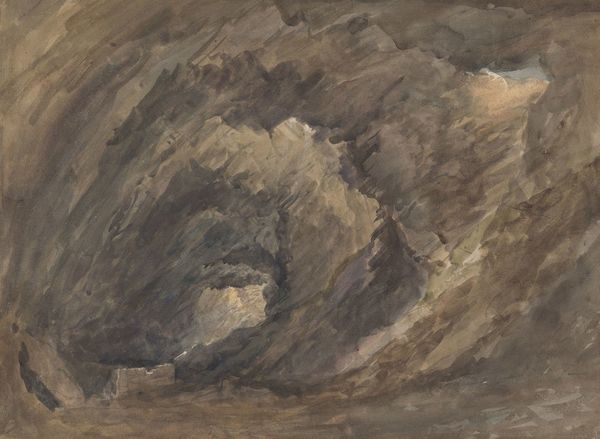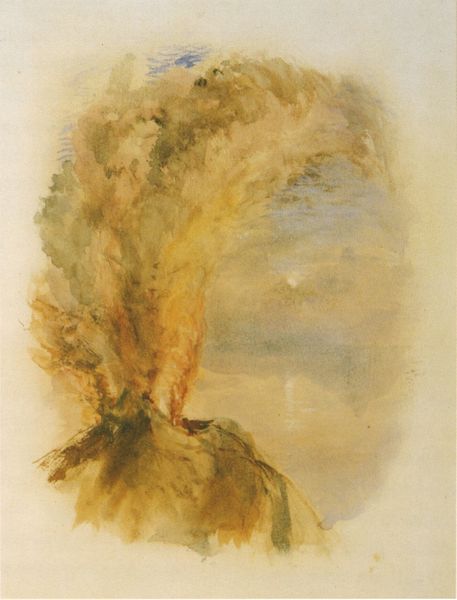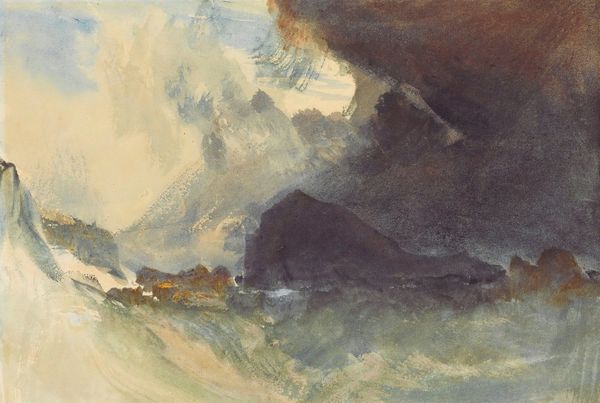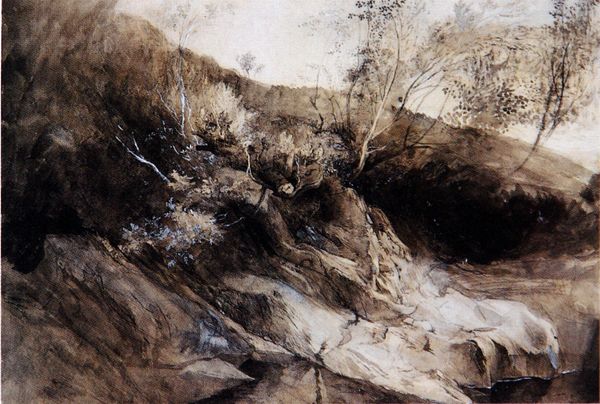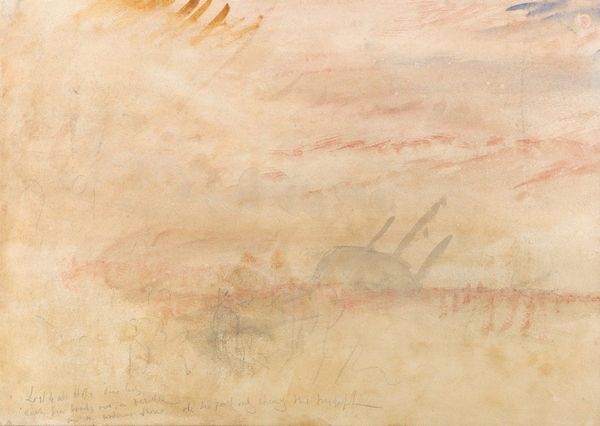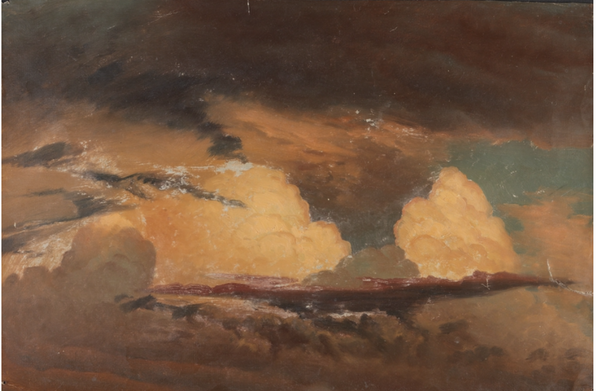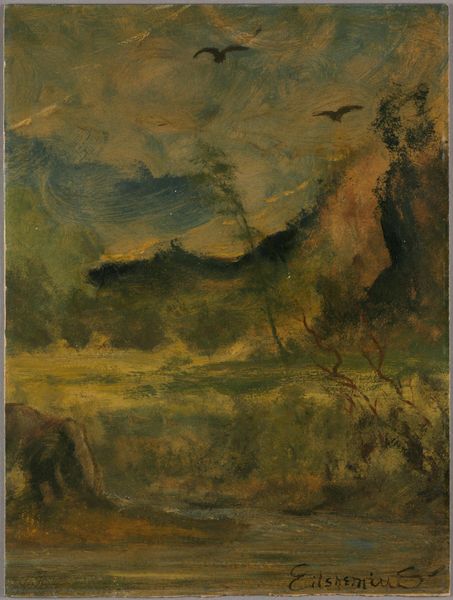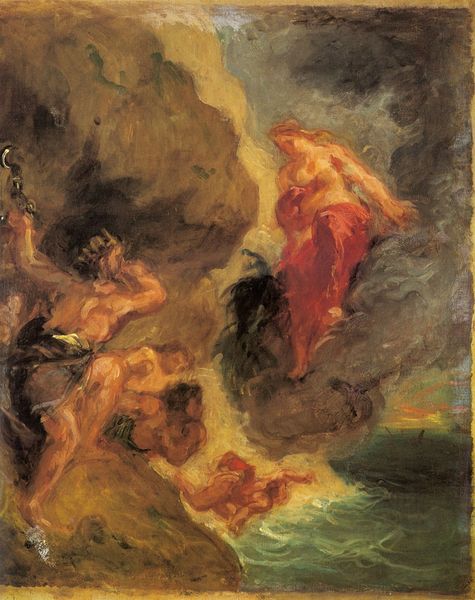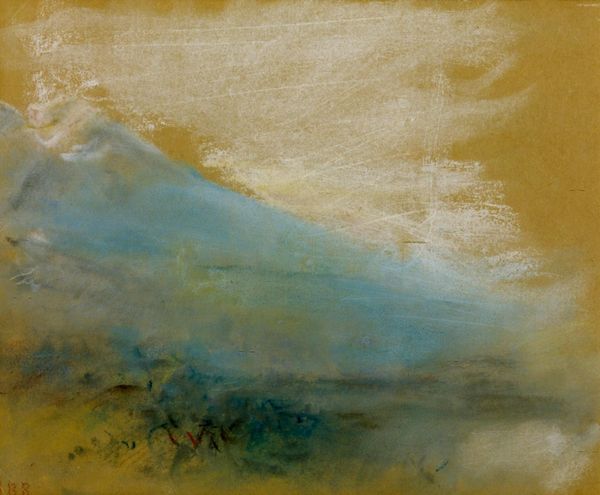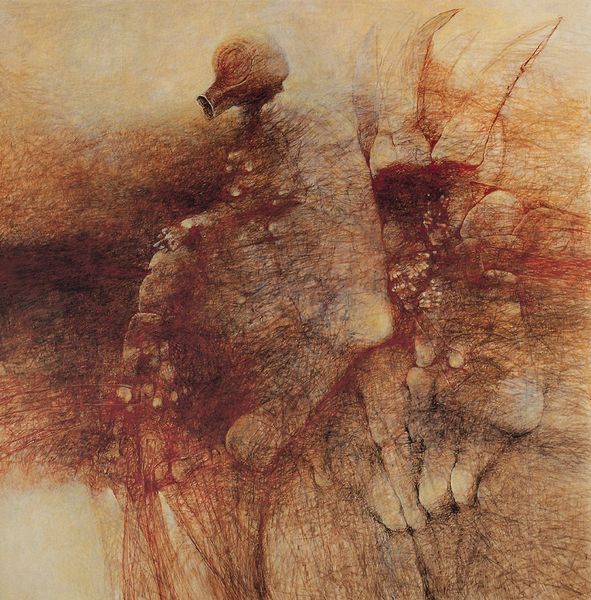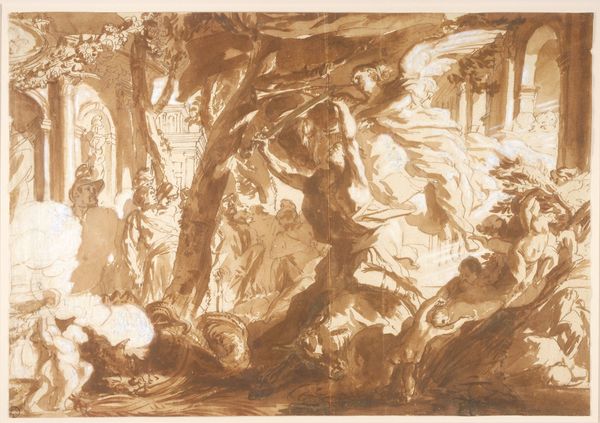
Copyright: Public domain
Curator: Look, John Ruskin offers us this brooding vista from 1855, “The Gates of the Hills,” a landscape swathed in earth tones rendered with both watercolor and drawing techniques. What hits you first about this scene? Editor: The overwhelming sense of… stone. Not in a solid, imposing way, but as something dissolving, or being dissolved, into a sepia dream. I feel like I could crumble it in my hands. Curator: A perfect capture of Romanticism, don’t you think? It’s nature filtered through emotion, monumental yet ephemeral. Notice how Ruskin captures light—almost as a tangible, molding force, like the hills are light’s raw material. Editor: Indeed, he really manipulates those watercolors! It makes me consider the materiality— the specific pigments, the paper he used, and of course the physical act of repeatedly applying layers. It becomes about labor, his investment, you know? What was he consuming, both literally and aesthetically, that pushed him to make these repeated marks? Curator: Precisely! Ruskin's process here is key. Each wash, each precise line… It’s his attempt to capture the sublime, I suspect. It whispers of reverence, perhaps awe. I like to believe that landscape gave the human a glimpse into the divine order of things. He’s revealing the invisible structures that make up the landscape. Editor: Revealing but also slightly obscuring... I see almost a tension in that layering of materials. A push and pull of showing his labor. How different his practice here seems to others from that era when craft and process were purposefully hidden, elevated above any material understanding. Curator: Interesting! To imagine Ruskin wrestling with such philosophical material himself… and it speaks in volume! But also that, looking into those sepia hills, our idea of the divine might feel a bit wobbly too. So all in all, worth meditating a few moments. Editor: Yes. Seeing his material decision making creates an intimacy with the final form that transforms, for me at least, the consumption of landscape into active engagement with the artist.
Comments
No comments
Be the first to comment and join the conversation on the ultimate creative platform.
